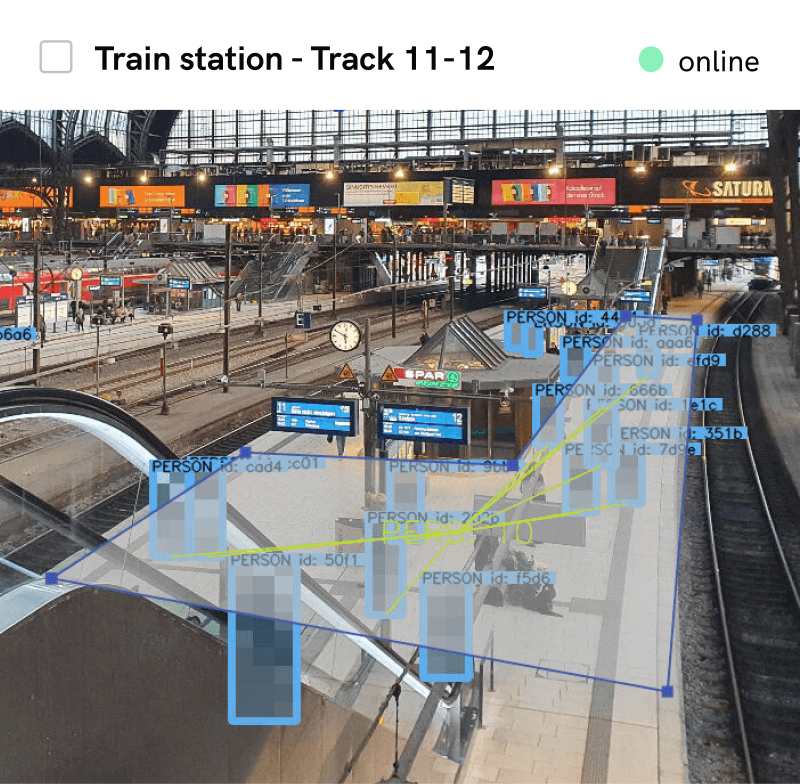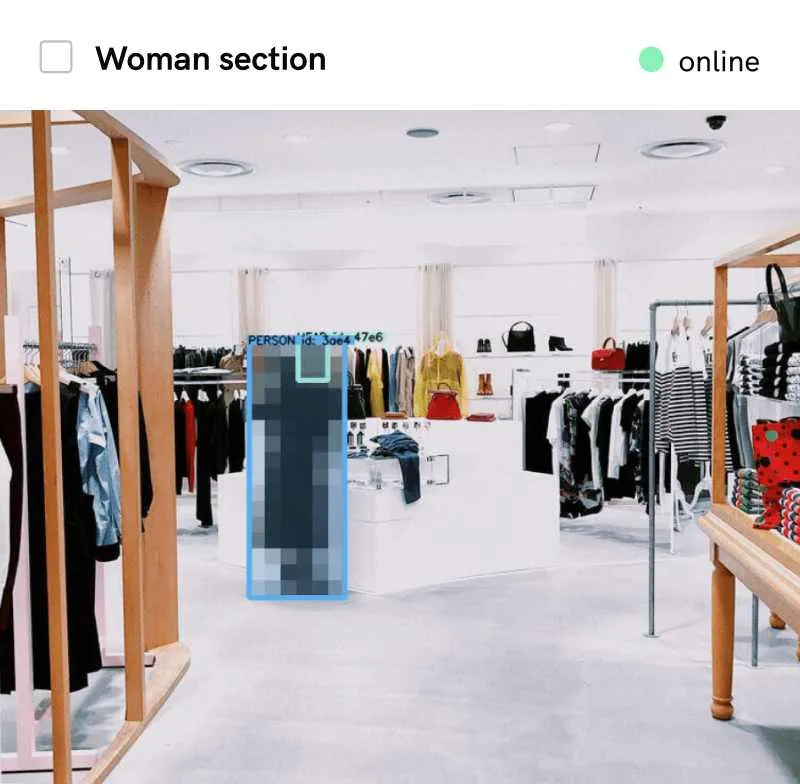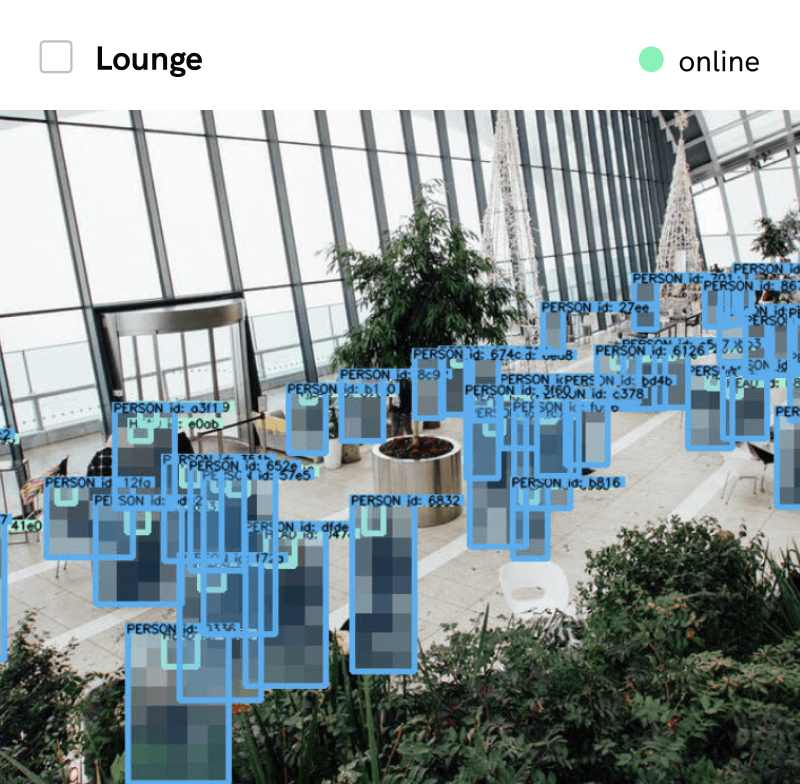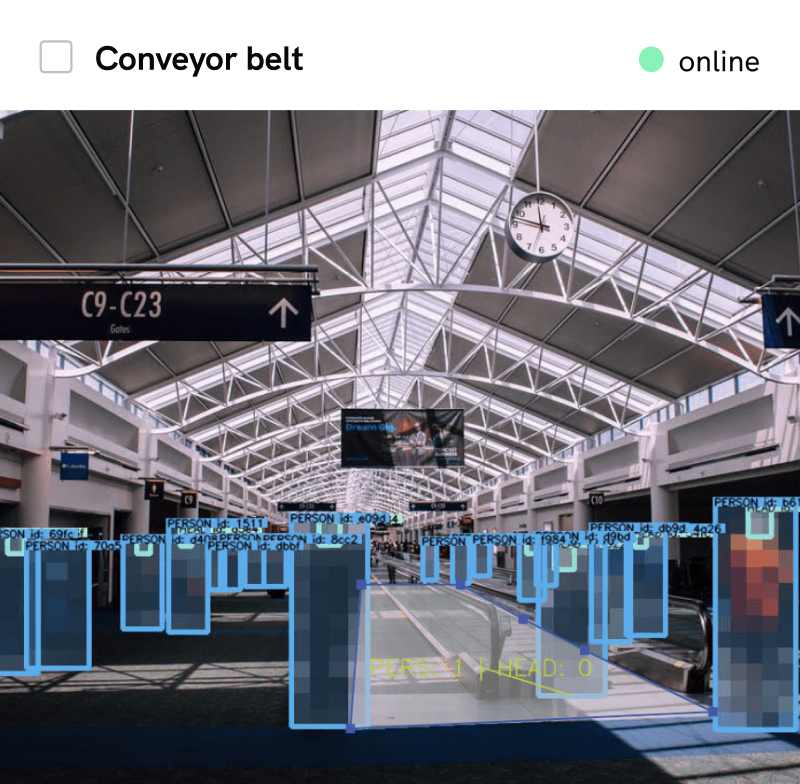From Browsing to Buying: Enhancing Retail with AI-Based Customer Insights
In an era highlighted by rapid technological advancements, the integration of artificial intelligence (AI) and video analytics into retail is transforming the industry. The article discusses how the retail industry is being transformed by artificial intelligence (AI) and video analytics.
Published
April 2, 2024
.avif)
In an era highlighted by rapid technological advancements, the integration of artificial intelligence (AI) and video analytics into retail is transforming the industry. By leveraging machine learning algorithms and video data analysis retailers can now deeply analyze a variety of data sets such as customer behaviors. These enable the personalization of shopping experiences and equip decision-makers with critical insights, significantly enhancing how businesses interact with their customers and streamline operations.
In this article, we will examine how customer insights derived from AI can enhance profitability and efficiency within the retail sector.
What is Customer Insight in Retail?
Customer insight in retail refers to the deep understanding of customers gained through analyzing their behavior, preferences, needs, and feedback. At the forefront of enhancing customer insights is AI-powered behavioral analysis. By leveraging AI and video analytics, retailers can analyze customer behavior in detail, allowing them to tailor their campaigns and the shopping experience more effectively. This approach not only helps in meeting customer expectations but also in predicting and influencing future shopping behaviors, marking a significant shift towards a more customer-driven retail landscape.
Transitioning From Traditional to Digital: How to Use AI in Retail?
The retail industry has practiced a significant transformation from traditional strategies to data-driven approaches for understanding customer preferences and behaviors. Traditionally, retailers relied on sales data, customer feedback, and market trends to decide on product assortment, store layout, and marketing strategies. These methods often resulted in a general view of customer behavior, lacking the details and simplicity that modern retail demands.
The shift to data-driven approaches in retail is supported by advancements in AI. Retailers now benefit from the power of video analytics and machine learning to analyze vast amounts of data in real-time, capturing detailed insights into customer behaviors and purchasing patterns. Thus, retailers can not only anticipate customer needs but also proactively engage with them in meaningful ways, fostering loyalty and driving sales growth in a highly competitive market. This change signifies a new era in retail, where decisions are informed by data, leading to more customer-centric business models.

Which Factors Are Influencing The Customer Behavior in Retail?
Several factors influence customer behavior in the retail sector, shaping how consumers make purchasing decisions and interact with products. Here are some of the main factors:
- Market Conditions: Market conditions play a significant role in shaping customer's behavior and decisions. These include the overall economic athmosphere, such as inflation rates, employment levels, and market confidence.
- Social Status: Products and brands often serve as symbols of status and identity, with consumers choosing items that reflect their desired social standing or group affiliation. High-end brands, for example, are often sought after by those wishing to convey a certain level of wealth or sophistication.
- Income: Income directly impacts a customer's purchasing power and often determines which products they can afford. Retailers need to understand the income demographics of their target market to position their products accordingly.
- Personal Elements: Personal elements encompass a range of individual characteristics that affect shopping habits, including age, gender, education, occupation, and lifestyle. Tailoring retail experiences to meet these personal preferences can significantly enhance customer satisfaction and loyalty.
- Psychological Elements: Psychological elements refer to the internal factors that influence a customer's decision to purchase, including motivation, perception, learning, beliefs, and attitudes.
Retailers leveraging AI and customer insights can analyze these factors in depth, using data from various touch points to understand and predict customer behavior. By doing so, they can personalize shopping experiences, refine their product offerings, and develop marketing strategies, ultimately driving sales and fostering customer loyalty.
Customer Decision Making Process
The customer decision-making process is a journey that customers go through before making a purchase. It can be summarized into five phases:
- Problem Recognition: This is the initial stage where the customer realizes they have a need or a problem that requires a solution.
- Information Search: Once the customer acknowledges their need, they move on to gather information online or offline about the product they need.
- Evaluation of Alternatives: With the information collected, the customer evaluates the available alternatives. This evaluation is based on various factors, including price, quality, features, and emotional satisfaction.

- Purchase Decision: After evaluating the alternatives, the customer makes their purchase decision. This decision can still be influenced by factors such as promotional offers, the opinions of others, or a sudden change in circumstances.
- Post-Purchase Behavior: After buying the product or service, the customer evaluates their satisfaction with the product. If the product meets or exceeds expectations, it can lead to customer loyalty and positive word-of-mouth.
Understanding this process is crucial for businesses as it can help them tailor their marketing efforts, improve product offerings, and enhance the overall customer experience at each stage of the decision-making process. By effectively addressing the needs and concerns of customers at each phase, companies can influence the decision-making process in their favor, leading to increased sales and customer loyalty.
Benefits of AI-Powered Behavioral Analysis for Retail Stores
Retailers can benefit from AI-powered behavioral analysis through increasing customer satisfaction and loyalty, and boosting sales and operational efficiency, facilitated by video surveillance software. This advanced analytical approach enables retailers to make data-driven decisions that align closely with actual customer needs and expectations, setting a new standard in the competitive landscape of the retail industry.
This understanding offers an array of benefits that can significantly enhance the shopping experience for customers, and drive efficiency and profitability for retailers. Here's a closer look at these benefits:
- Enhanced Customer Insights
AI-driven behavioral analysis dives deep into customer behavior patterns, preferences, and purchasing decisions, providing retailers with a granular understanding of their customers. By understanding the customer behavior, retailers can tailor their offerings more effectively to meet individual needs.
- Personalized Shopping Experience
Behavioral analysis enables retailers to craft personalized marketing strategies and enhance in-store experiences. Utilizing AI to analyze past purchases and browsing habits, retailers can offer tailored product recommendations online and in physical stores. Digital signage in-store can also present personalized offers to customers, influenced by their shopping history or loyalty program data, creating a highly customized shopping journey.
- Optimized Store Layout and Product Placement
Behavioral analysis provides insights into how customers move through a store and interact with products. This information is invaluable for making informed decisions about store layout and product placement. Retailers can design their stores to enhance the shopping experience, placing high-demand products in easily accessible locations or arranging items to encourage additional purchases.

- Improved Inventory Management
Predictive analytics, a key element of behavioral analysis, allows retailers to forecast future purchasing trends based on past customer behavior. This predictive capability enables retailers to optimize their inventory levels, ensuring they have the right products available at the right time. By reducing instances of stockouts and minimizing excess inventory, retailers can save costs and improve customer satisfaction.
- Increased Sales and Customer Loyalty
By aligning marketing strategies, store layouts, and inventory management with customer behavior insights, retailers can see a substantial increase in sales and customer loyalty. Targeted promotions and personalized experiences make customers feel valued and understood, enhancing their satisfaction and likelihood to return.
In summary, the applications of behavioral analysis in retail through AI offer a transformative approach to understanding and serving customers. By leveraging deep insights into customer behavior, retailers can personalize experiences, optimize operations, and ultimately achieve a competitive edge in the market.
How Does Isarsoft Perception Help Retailers?
Isarsoft Perception tracks customer flow, analyzes product interactions, monitors purchasing habits and strengthens retail operations with intelligent video analytics software. This technology enables retailers to understand peak shopping hours, navigate customer pathways, and identify congestion points, thereby optimizing store layout, staffing, and queue management. Insights into which products capture customer interest, how long they engage with items, and the effectiveness of product placement empower retailers to refine product placement, promotional tactics, and inventory management. Moreover, a detailed analysis of purchasing behaviors helps in tailoring offers to enhance customer satisfaction and streamline checkout procedures.
Isarsoft Perception generates actionable insights from real-time monitoring of customer behavior, and interaction facilitates data-driven decision-making. Retailers are equipped to make strategic decisions regarding marketing, store layout, and product assortment, leading to improved customer service. Beyond marketing and layout optimizations, Isarsoft Perception aids in boosting operational efficiency and identifying opportunities for process improvements that reduce costs and elevate the shopping experience. This comprehensive approach not only drives sales but also fosters a loyal customer base by ensuring a seamless and satisfying shopping journey.
More about Isarsoft
With Isarsoft Perception, your camera systems become part of your business intelligence. Whether the goal is to increase efficiency, customer satisfaction, or safety, Isarsoft Perception provides the insights needed for informed decisions.

Optimize your business processes.
Improve business processes with video-based business intelligence from Isarsoft.









.webp)